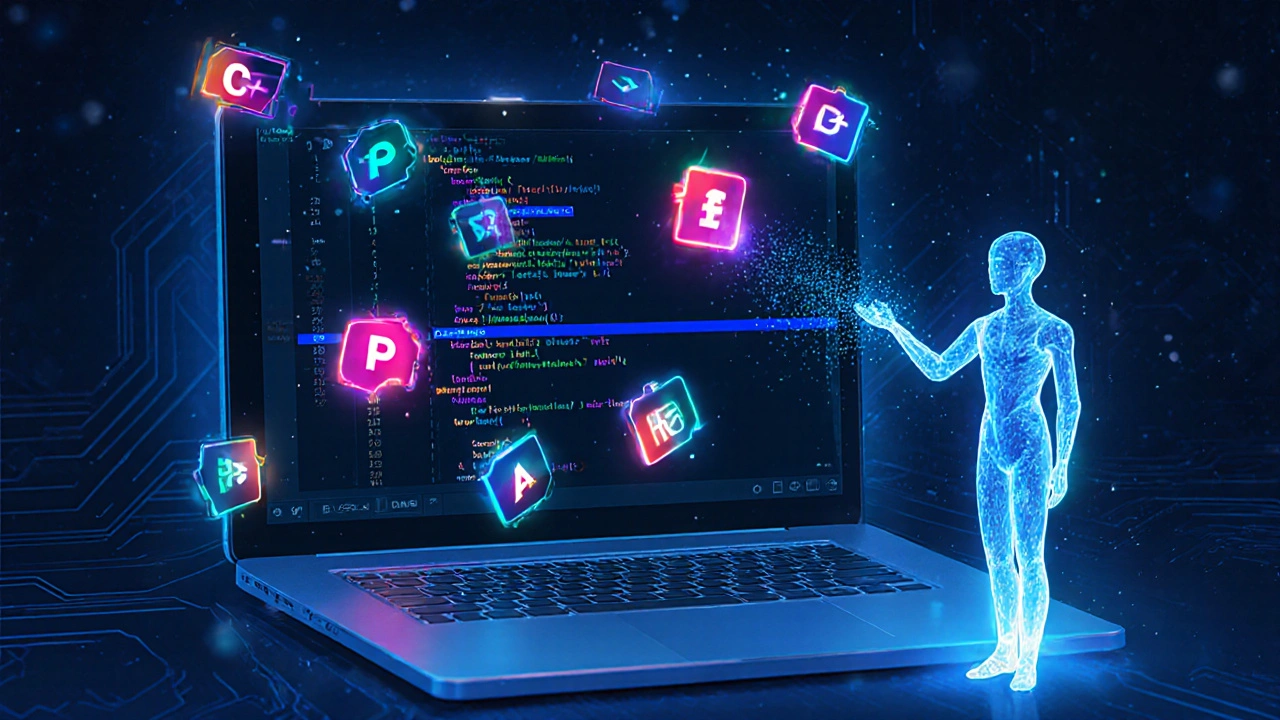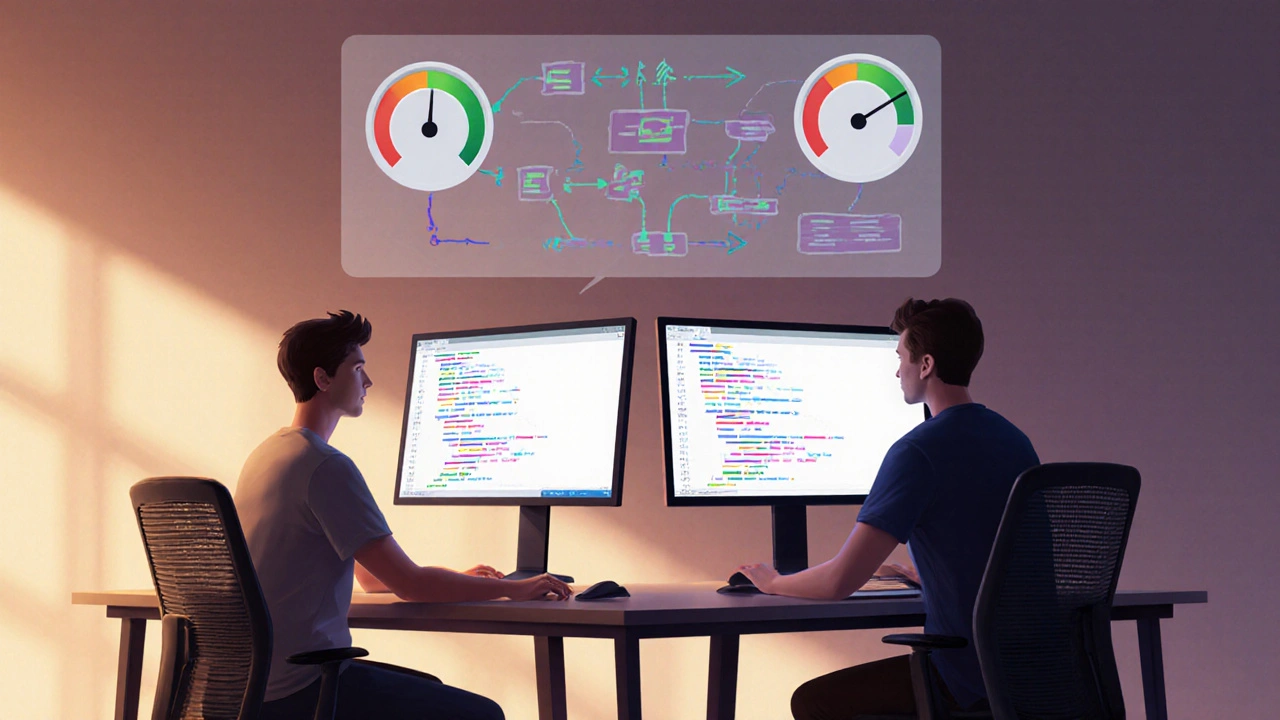Programming Faster: Proven Tips to Boost Your Coding Speed

Programming Speed Booster Calculator
Your Potential Time Savings
Mastering shortcuts can boost your productivity by 10-25%. Key ones to practice daily:
- Ctrl+P / Cmd+P: Open file
- Ctrl+Shift+R / Cmd+Shift+R: Rename symbol
- Ctrl+/ / Cmd+/ : Toggle comment
- Ctrl+D / Cmd+D: Duplicate line
- Ctrl+Shift+K / Cmd+Shift+K: Delete line
- Ctrl+Shift+P / Cmd+Shift+P: Command palette
Using timeboxing techniques like Pomodoro can increase focus and reduce context switching:
- 25-minute focused work sessions
- 5-minute breaks between sessions
- 15-minute breaks after 4 sessions
- One-ticket-at-a-time approach
- End-of-day review routine
When you hear the phrase Programming Faster is the practice of writing clean, functional code in less time while maintaining quality, you might think it’s just about typing speed. In reality, it’s a blend of habits, tools, and mindset that lets you ship features faster without burning out.
Quick Takeaways
- Adopt a daily ritual of timeboxing work in 25‑minute blocks.
- Master Keyboard Shortcuts is a set of key combinations that let you navigate and edit without leaving the keyboard for your favorite editor.
- Leverage Code Editor is the software you write code in, offering syntax highlighting, autocomplete, and extensions extensions that automate repetitive tasks.
- Integrate Version Control is a system that tracks changes to code, enabling safe experiments and quick rollbacks branches for feature work.
- Schedule short Pair Programming is a collaborative technique where two developers share one workstation to write code together sessions to catch bugs early.
Why Speed Matters Without Sacrificing Quality
Companies measure developer output in story points, but the real value comes from shipping reliable code fast. Faster cycles let product teams test ideas with real users, iterate, and stay ahead of competitors. A 2024 State of Developer Productivity report found teams using systematic speed‑boosting habits delivered 30% more features per quarter while reporting 15% less overtime.
Speed isn’t about racing; it’s about eliminating friction. When you remove needless context switches, you free mental bandwidth for problem solving, which is the true engine of productivity.
Core Habits That Turn Slow Coding Into a Smooth Flow
Habits are the invisible scaffolding behind every line you type.
- Daily Timeboxing: Use the Pomodoro Technique (Pomodoro Technique is a time‑management method that breaks work into 25‑minute focused intervals followed by short breaks). After four cycles, take a longer 15‑minute break to reset.
- One‑Ticket‑At‑A‑Time: Close the mental loop before moving to the next task. Multi‑tasking adds up to 40% extra work due to re‑orientation.
- End‑of‑Day Review: Spend five minutes noting what got done, what blocked you, and the next action. This reduces the start‑up friction tomorrow.
These rituals cost a few minutes each day but shave hours off a sprint.
Tool‑Level Accelerators
Even the best habits stall if your tooling is clunky. Here are the three categories where a smart investment yields immediate speed gains.
1. Master Keyboard Shortcuts is a set of key combinations that let you navigate and edit without leaving the keyboard
Map the most common actions-search, go‑to‑definition, refactor, and split screen-to easy keys. For VS Code, Ctrl+P opens any file instantly, and Ctrl+Shift+R triggers a rename across the project.
Practice a shortcut daily until it becomes muscle memory. A 2023 internal study at a fintech firm showed developers who mastered the top ten shortcuts wrote 12% more lines per hour.
2. Leverage Code Editor is the software you write code in, offering syntax highlighting, autocomplete, and extensions Extensions
Pick an editor that supports live linting, code snippets, and AI‑assisted completions. Extensions like "Prettier" automatically format on save, eliminating endless formatting debates.
Consider AI assistants (e.g., GitHub Copilot) not as a crutch but as a way to generate boilerplate quickly. When used for repetitive scaffolding, teams report up to a 20% reduction in churn time.
3. Automate Repetitive Tasks with Version Control is a system that tracks changes to code, enabling safe experiments and quick rollbacks Hooks
Set up pre‑commit hooks that run linters and unit tests. This catches errors before they hit the CI pipeline, saving minutes per pull request.
Use branch naming conventions (e.g., feat/checkout‑flow) so you can filter work fast in tools like GitHub Projects.

Collaboration Techniques That Multiply Speed
Working alone feels fast until you hit a roadblock. Pair programming, code reviews, and shared coding standards reduce the time spent hunting bugs.
- Pair Programming pairs often finish a feature 25% quicker because one person writes while the other reviews in real time.
- Mob Programming (whole team on one screen) is ideal for onboarding new hires - they learn the codebase at warp speed.
- Automated Code Reviews using tools like SonarQube flag style violations instantly, letting humans focus on architectural concerns.
Continuous Refactoring: Keep the Code Clean While Moving Fast
Refactoring is often labeled as “non‑essential”. In reality, small, frequent refactors prevent technical debt from turning into a speed‑killer.
Adopt the "Boy Scout Rule": leave the code better than you found it. Allocate 5‑10% of sprint capacity for cleanup - the payoff is fewer merge conflicts and faster onboarding.
Measuring Your Progress
What gets measured gets improved. Track these simple metrics:
- Cycle Time: Time from work start to merge. Aim for under 24hours for small tickets.
- Lead Time: From idea to production. Visualize on a cumulative flow diagram.
- Bug Escape Rate: Bugs found in production per 1,000 lines. A decreasing trend signals that speed isn’t sacrificing quality.
Review the data each sprint retro. Adjust habits or tools if any metric drifts upward.
Common Pitfalls and How to Avoid Them
Even seasoned developers fall into traps that slow them down.
- Over‑engineering: Building abstractions you never use adds cognitive load. Follow the YAGNI principle - "You Aren’t Gonna Need It".
- Context Switching: Jumping between tickets inflates effort. Batch similar work together.
- Ignoring IDE Settings: Default configurations often lack useful shortcuts. Spend an hour customizing your editor - it pays back manyfold.
Quick Recap
Speed comes from three pillars: disciplined habits, friction‑free tools, and collaborative practices. By tightening each pillar, you turn "programming faster" from a buzzword into a measurable advantage.
| Editor | Key Shortcut Coverage | AI Assistance | Extensibility | Typical Learning Curve |
|---|---|---|---|---|
| VS Code | High | Copilot, TabNine | Marketplace (5k+ extensions) | Low |
| JetBrains IntelliJ | Very High | Built‑in code‑completion | Plugin repository (1k+) | Medium |
| Sublime Text | Medium | Third‑party AI plugins | Package Control | Low |
| Vim | Very High (modal) | Limited, requires plugins | Huge community scripts | High |

Frequently Asked Questions
How much time should I allocate to learning keyboard shortcuts?
Spend 10‑15 minutes each day practicing a handful of new shortcuts. After two weeks you’ll notice faster navigation and less mouse‑click friction.
Is pair programming worth it for solo developers?
Even solo coders can benefit by pairing with a colleague once a week or using remote pairing tools. The fresh perspective often catches bugs early, saving hours later.
What’s the best AI assistant for speeding up code writing?
GitHub Copilot integrates tightly with VS Code and offers context‑aware suggestions. Pair it with a linter to keep the output clean.
How do I measure if I’m really programming faster?
Track cycle time for each ticket in your project board. A consistent drop of 10‑15% over a few sprints indicates a real speed gain.
Can I adopt these practices without buying new tools?
Absolutely. Most speed gains come from habits and shortcuts that are free. Free extensions for VS Code or Vim can replace paid plugins.